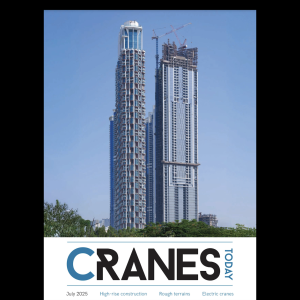The company started 2009 with USD484.4m in cash and cash equivalents. After a year of tough controls on costs, it ended 2009 with USD971.2m in the bank. Two years ago, at the start of 2008, it had USD1.27bn available. President and COO Tom Riordan indicated at least some of this cash could be used for acquisitions, as well as internal investment and debt reduction.
DeFeo said Terex’s decision to focus on cash management during its last financial year allowed it to put in place a number of actions. This included the sale of its mining business to Bucyrus International.
“We just completed one of the most challenging years ever for our industry and our company,” said DeFeo. “We weathered the storm and have made many changes along the way.
“And while we continue to face very low levels of demand in many of our end markets, the company is beginning to recover operationally, and our strategic transformation has started with the sale of our mining business to Bucyrus International.”
Reporting its 2009 fourth quarter, Terex recorded a net loss from continuing operations of USD114.8m, compared to a net loss of USD452.3m for the fourth quarter of 2008. Net sales were USD1.06bn in the fourth quarter of 2009, a decrease of 36.1% from USD1.65bn in the fourth quarter of 2008. Results exclude the mining and Load King trailer businesses, which are classified as discontinued operations in Terex’s results. During the fourth quarter of 2009, the company incurred pre-tax charges of approximately USD27m associated with restructuring programmes and a continued reduction in production levels.
In its cranes segment, net sales for the fourth quarter of 2009 decreased USD187.8m to USD557.2m year-on-year. Terex said customers continued to purchase high capacity crawler and all terrain cranes during the fourth quarter, driven by global infrastructure and power projects.
Lower capacity crane demand deteriorated in the fourth quarter, it said, as sales of tower cranes, rough terrain cranes and lower capacity all terrain cranes were impacted as commercial construction continued to soften.
An operating profit of USD22.9m was generated during the fourth quarter of 2009, a decrease of USD74.5m. Lower net sales negatively impacted profitability by approximately USD71m during the fourth quarter of 2009 compared to the fourth quarter of 2008.
Cranes segment backlog decreased 49.7% compared to 31 December, 2008 levels, and decreased 4.4% as compared to 30 September, 2009 levels. Excluding the impact of the port equipment business acquisition during the third quarter of 2009, backlog decreased approximately 60% as compared to 31 December, 2008 levels and approximately 24% as compared to 30 September, 2009 levels. The majority of backlog is composed of high capacity crawler cranes and high capacity all terrain cranes, as well as port equipment. Demand for smaller capacity cranes continues to remain weak.
For the full year 2009, Terex reported a net loss of USD450.7m, compared to a net loss of USD74.0m for the full year 2008. Charges primarily related to adjustment of the company’s production levels, resulted in after-tax charges of approximately USD100.6m and USD28.8m for the full year 2009 and 2008 respectively. Net sales were just over USD4.04bn in 2009, a decrease of 51.8% from USD8.39bn in 2008.
For the year as a whole, cranes segment net sales fell from USD2.96bn to USD1.96bn, with income from operations down from USD392.9m in 2008 to USD80.4m in 2009.
DeFeo said: “When net sales declines this rapidly, the profitability falls even more quickly, as pricing actions, inventory valuations, bad debt, and restructuring costs all add up. This is why we chose to manage the company for cash in 2009, as well as quickly putting in place cost reduction programmes to resize the organisation’s cost structure to the current demand environment.
“We are glad that we took this path, even though at times it was painful.”
DeFeo said the outlook for 2010 remains challenging, but that he expects performance to improve during the year.
“We have begun the process of changing our focus from cash management to growth. We see relative stability in our end markets and believe we need to capture market share in order to grow.
“To do this, we will introduce several new products across a range of our businesses and complete new factories in India and China that will support our business later in 2010 and beyond.
“We expect to continue to incur operating losses in the first half of 2010, and expect to return to operational profitability in the second half of the year.”
Riordan said growth will materialise in the later part of 2010, with the cranes segment experiencing moderate growth in the second half of the year.
“We recognise that the sale of the mining business makes our short-term hurdles even higher. That said, we believe the changes we made in 2009 position the company well for the future. Our operational attention has shifted from a focus primarily on cash generation in 2009 to growth and profit generation in 2010, as our markets have stabilised, albeit at low levels,” said Riordan.
DeFeo concluded: “As the 2010 year develops, we will make choices on the appropriate use of our liquidity, allocating our resources between internal investments, acquisitions and debt payment depending on the relative value and timing of the options being considered.
“Given the challenging environment for our industry and our company, we believe that we are in a good position to capitalise on future growth and profit opportunities.”






